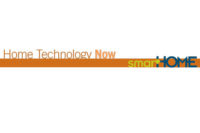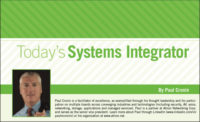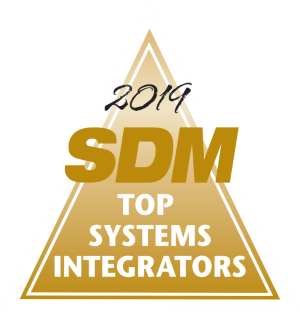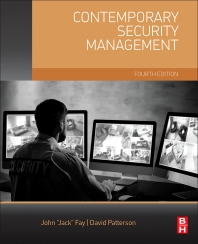Expanding your service offering to include commercial energy management is no small undertaking. While it may seem the two industries are very similar, with inputs, outputs, control points and data gathering, that is where the similarities end. Nevertheless, with the continued drive to integrate building systems and streamline the process of facility control, adding to your integration skill set allows your firm to have a more marketable, full-service offering to customers. That, in return, can provide an increased return on investment for you.
The move into commercial energy management will require changes throughout the company. Your existing computer-savvy, technical staff will grasp the controls industry front-end software and integration practices with proper training. They will be a great asset in the field for system network configurations and startup programming. However, there are other key personnel you will need to be successful as an energy management services provider.
New Resources
The most important addition to your team will be an experienced mechanical engineer. This role is crucially important, so companies should not select a young engineer just out of college. The type of experience you are looking for is in commercial building automation and energy management — someone with central plant, air handler, boiler and overall facility operational knowledge. The next important new employee is the technician who supports the new staff engineer. Although you will be able to use some of your existing security staff, a heating, ventilation and air conditioning (HVAC) trained technician is a valuable asset. A young, energetic HVAC tech with a few years of field experience — even if it is light commercial — is a great place to start.
Your engineer should take advantage of the ASHRAE standards and guidelines. ASHRAE (formerly the American Society of Heating, Refrigerating and Air Conditioning Engineers, https://www.ashrae.org/), founded in 1894, is a building technology society with more than 54,000 members worldwide. ASHRAE has lead the way in guiding the design principles and best practices for commercial HVAC and refrigeration systems for more than 100 years. The group’s commitment to standards, research and technology has created an exhaustive catalog of the base monitoring, efficiency formulas, algorithms and strategies to maintain energy-consuming systems operating at optimal efficiencies. Many of these standards were written long before we had the computing power to implement them effectively.
Today, with core energy management strategies well established, along with the continual research and updated energy savings methods such as the “Advanced Energy Design Guides,” ASHRAE professional membership is as valuable as your ASIS membership.
Manufacturers that specialize in integrated solutions are also valuable sources of information and insight into the industry. Collaborate with product manufacturers that can provide the training and expertise required by you to install and service these systems. As an integrator, in addition to knowing the specifics of each of these systems as a stand-alone, you also will offer expertise in integrating them in practical applications.
The Future of Energy Management
As you consider engaging in energy management, it is important to understand where commercial energy management is headed today. First, consider the role of the engineer — a certified energy manager, who must constantly monitor systems 24 hours a day, continually making adjustments and squeezing every bit of energy savings available. These adjustments are based on time, temperature, humidity, dew point, delta, consumption and radiant energy readings, to name a few.
There are resources available that enable energy managers to make the right choices. These include ASHRAE best practices in energy savings, the equipment manufacturer’s optimal operational data, and programs such as the Continuous Commissioning® process developed by Texas A&M University (http://esl.tamu.edu/continuous-commissioning). With the information available from these resources, energy managers can introduce multiple energy sequences to accomplish significant energy savings.
In integrated buildings, access control often is used as a gateway to the energy management system. The proximity/smart card is used to indicate to all of the building systems who is in the building, especially during off hours such as nights or weekends, when many of a building’s systems are turned off to save energy. The swipe of an access card can be a signal to turn on lights and activate the HVAC to programmed set points in specific areas of the building, in addition to unlocking doors and activating video cameras. As the common thread to all of the building integration, it is the card that causes the security systems integrator to be involved with all of the other applications, including energy management systems, and the reason having expertise in all of these systems and applications is an advantage.
New technology is available today for very precise energy management and control. For example, a commercial central chilled water plant can be operated in real time. Instead of using one engineered sequence that was developed for local or regional weather and load baseline conditions, multiple energy savings strategies can be implemented at the same time. Using the equipment manufacturer’s optimal operational baseline settings as a reference, along with current environmental and load conditions, adjustments are continuously updated to keep up with current environmental conditions and variables. This technology is no longer a theory; it is available today from several manufacturers. Furthermore, this technology can be introduced without replacing all of the existing controls equipment.
These same strategies also can be introduced into lighting control systems. With the advances in LED lighting and dimming control, significant energy savings are a reality. Lighting control integrated within the whole facility’s energy management system provides the user with another solution to enhance LEED certification and operational savings.
Appling Energy Management Technology
The next step will be to begin to apply some of this energy management technology to your security customers. The beauty of most energy management hardware is its simplicity and complexity all rolled into one. For example, consider a customer who has a complicated security sequence for access control. Devised to prevent unauthorized entry, the sequence requirements turn out to be too complicated for the customer’s video management system or card access system to handle efficiently, if at all. One solution is to hire a PLC contractor to handle the hardware and program the inputs, control outputs and control loops. PLCs are a great way to accomplish the task; however, they are considerably more expensive than a building automation controller is.
With an energy management controller, you can provide an all-in-one unit. This unit can contain the inputs and outputs to connect to the sensors and control relays to run the physical access sequence. Inside the controller lies the power to run even the most complex of sequences. Unlike most security controllers, you now have full Boolean logic, time-based logic and algebraic and trig math calculations at your disposal. There is virtually no security sequence that cannot be accomplished at one-third the cost of PLCs.
Now that open protocols and communication standards are more readily adopted, a security integrator can take advantage of building information as never before. LEED accreditation and standards can be affected by using physical security monitoring of building functions that are not traditionally observed by the building automation system. Security data and point status information can enhance traditional occupancy schedules and room setpoints, raise awareness of building pressure issues, and provide additional security-specific information directly from the building automation system. n
About the Author: Paul Strohm is vice president of the InsideIQ Building Automation Alliance (www.insideiq.org), an international alliance of independent building and facility automation companies representing common automation and security system platforms. Strohm is also president and COO of C & C Group, a facility services provider in the Midwest, based in Lenexa, Kansas.
LEED Revisions Open up New Markets, Increase Reliance on Technology
LEED v4 is the most comprehensive update to the Leadership in Energy and Environmental Design rating system since the U. S. Green Building Council (USGBC) introduced LEED in 1998. The changes in LEED v4 affect every phase of building design and construction in one way or another, and some of these changes offer advantages for systems integrators interested in pursuing the green building market.
One fundamental change is the range of buildings eligible for LEED Certification. The revised standard includes 21 different market sector adaptations covering facilities such as new and existing data centers, new and existing warehouse and distribution centers, hospitality, existing schools, existing retail, and multifamily midrise. LEED v4 identifies and addresses the unique needs of each building type and offers appropriate credits. The effect of this change is to further open the market for LEED buildings by allowing types of buildings, such as data centers or warehouses, that were not LEED-certifiable before. An expanding market leads to more opportunities for integrators to pursue.
Another important change is an emphasis on performance. The USGBC has developed specific goals for what they expect green buildings to accomplish, so there is a new focus on implementing performance measurement and creating performance feedback mechanisms. This translates to a larger emphasis on installing technologies or technology infrastructure to enable building operators to continuously monitor and improve performance of their facilities. Integrators with capabilities in building automation systems (BAS) and other technologies can take advantage of new opportunities to meet this demand.
Here are some specific technologies that are important in LEED v4:
- Metering is a new prerequisite in both new construction (NC) and existing buildings (EB) and there is a new Advanced Energy Metering credit available. The standards require meters to track energy use and have reporting capabilities. For the new credit, the meters must be able to transmit data and allow for remote access.
- Demand Response (DR) is a new credit for both NC and EB projects. The DR program must curtail a minimum of 10 percent of a building’s peak electricity demand. The integrator can use technologies such as a BAS, meters, and an energy management platform to enable building operators to monitor and manage energy use as part of the DR program.
- Indoor Environmental Quality (IEQ) gets a boost in LEED v4 as well, with an emphasis on monitoring air quality throughout the building. This requires installing infrastructure for monitoring and managing performance after occupancy. An Enhanced Indoor Air Quality Strategies credit for either or NC or EB requires employing sensors to monitor parameters such as outdoor air and contaminants.
- The ENERGY STAR performance requirement for EB jumps to 75 in LEED v4. This further increases the demand for building energy management platforms that tie into the BAS and meters so building owners can track and monitor data, identify defects that waste energy, measure and verify energy improvements, and calculate energy savings. Other technologies that integrators can offer to help improve energy performance in buildings include lighting controls, occupancy sensors, automatic shutoff controls, and plug load controls.
The number of buildings seeking LEED Certification continues to increase, and with the expansion of eligible market sectors this trend will continue. The emphasis on performance in LEED v4 means smart building technology is more important than ever for the certification of green buildings. Integrators who can install a variety of technologies that allow operators and occupants to measure, analyze and interact with building systems will have an advantage when pursuing green building opportunities. — By Frank Rotello, president of InsideIQ Building Automation Alliance and CEO of Alpha Controls & Services in Rockford, Ill. Alpha is a member and supporter of the local USGBC chapter.
Expanding your service offering to include commercial energy management is no small undertaking. While it may seem the two industries are very similar, with inputs, outputs, control points and data gathering, that is where the similarities end. Nevertheless, with the continued drive to integrate building systems and streamline the process of facility control, adding to your integration skill set allows your firm to have a more marketable, full-service offering to customers. That, in return, can provide an increased return on investment for you.
The move into commercial energy management will require changes throughout the company. Your existing computer-savvy, technical staff will grasp the controls industry front-end software and integration practices with proper training. They will be a great asset in the field for system network configurations and startup programming. However, there are other key personnel you will need to be successful as an energy management services provider.
New Resources
The most important addition to your team will be an experienced mechanical engineer. This role is crucially important, so companies should not select a young engineer just out of college. The type of experience you are looking for is in commercial building automation and energy management — someone with central plant, air handler, boiler and overall facility operational knowledge. The next important new employee is the technician who supports the new staff engineer. Although you will be able to use some of your existing security staff, a heating, ventilation and air conditioning (HVAC) trained technician is a valuable asset. A young, energetic HVAC tech with a few years of field experience — even if it is light commercial — is a great place to start.
Your engineer should take advantage of the ASHRAE standards and guidelines. ASHRAE (formerly the American Society of Heating, Refrigerating and Air Conditioning Engineers, https://www.ashrae.org/), founded in 1894, is a building technology society with more than 54,000 members worldwide. ASHRAE has lead the way in guiding the design principles and best practices for commercial HVAC and refrigeration systems for more than 100 years. The group’s commitment to standards, research and technology has created an exhaustive catalog of the base monitoring, efficiency formulas, algorithms and strategies to maintain energy-consuming systems operating at optimal efficiencies. Many of these standards were written long before we had the computing power to implement them effectively.
Today, with core energy management strategies well established, along with the continual research and updated energy savings methods such as the “Advanced Energy Design Guides,” ASHRAE professional membership is as valuable as your ASIS membership.
Manufacturers that specialize in integrated solutions are also valuable sources of information and insight into the industry. Collaborate with product manufacturers that can provide the training and expertise required by you to install and service these systems. As an integrator, in addition to knowing the specifics of each of these systems as a stand-alone, you also will offer expertise in integrating them in practical applications.
The Future of Energy Management
As you consider engaging in energy management, it is important to understand where commercial energy management is headed today. First, consider the role of the engineer — a certified energy manager, who must constantly monitor systems 24 hours a day, continually making adjustments and squeezing every bit of energy savings available. These adjustments are based on time, temperature, humidity, dew point, delta, consumption and radiant energy readings, to name a few.
There are resources available that enable energy managers to make the right choices. These include ASHRAE best practices in energy savings, the equipment manufacturer’s optimal operational data, and programs such as the Continuous Commissioning® process developed by Texas A&M University (http://esl.tamu.edu/continuous-commissioning). With the information available from these resources, energy managers can introduce multiple energy sequences to accomplish significant energy savings.
In integrated buildings, access control often is used as a gateway to the energy management system. The proximity/smart card is used to indicate to all of the building systems who is in the building, especially during off hours such as nights or weekends, when many of a building’s systems are turned off to save energy. The swipe of an access card can be a signal to turn on lights and activate the HVAC to programmed set points in specific areas of the building, in addition to unlocking doors and activating video cameras. As the common thread to all of the building integration, it is the card that causes the security systems integrator to be involved with all of the other applications, including energy management systems, and the reason having expertise in all of these systems and applications is an advantage.
New technology is available today for very precise energy management and control. For example, a commercial central chilled water plant can be operated in real time. Instead of using one engineered sequence that was developed for local or regional weather and load baseline conditions, multiple energy savings strategies can be implemented at the same time. Using the equipment manufacturer’s optimal operational baseline settings as a reference, along with current environmental and load conditions, adjustments are continuously updated to keep up with current environmental conditions and variables. This technology is no longer a theory; it is available today from several manufacturers. Furthermore, this technology can be introduced without replacing all of the existing controls equipment.
These same strategies also can be introduced into lighting control systems. With the advances in LED lighting and dimming control, significant energy savings are a reality. Lighting control integrated within the whole facility’s energy management system provides the user with another solution to enhance LEED certification and operational savings.
Appling Energy Management Technology
The next step will be to begin to apply some of this energy management technology to your security customers. The beauty of most energy management hardware is its simplicity and complexity all rolled into one. For example, consider a customer who has a complicated security sequence for access control. Devised to prevent unauthorized entry, the sequence requirements turn out to be too complicated for the customer’s video management system or card access system to handle efficiently, if at all. One solution is to hire a PLC contractor to handle the hardware and program the inputs, control outputs and control loops. PLCs are a great way to accomplish the task; however, they are considerably more expensive than a building automation controller is.
With an energy management controller, you can provide an all-in-one unit. This unit can contain the inputs and outputs to connect to the sensors and control relays to run the physical access sequence. Inside the controller lies the power to run even the most complex of sequences. Unlike most security controllers, you now have full Boolean logic, time-based logic and algebraic and trig math calculations at your disposal. There is virtually no security sequence that cannot be accomplished at one-third the cost of PLCs.
Now that open protocols and communication standards are more readily adopted, a security integrator can take advantage of building information as never before. LEED accreditation and standards can be affected by using physical security monitoring of building functions that are not traditionally observed by the building automation system. Security data and point status information can enhance traditional occupancy schedules and room setpoints, raise awareness of building pressure issues, and provide additional security-specific information directly from the building automation system. n
About the Author: Paul Strohm is vice president of the InsideIQ Building Automation Alliance (www.insideiq.org), an international alliance of independent building and facility automation companies representing common automation and security system platforms. Strohm is also president and COO of C & C Group, a facility services provider in the Midwest, based in Lenexa, Kansas.
SIDEBAR 1
LEED Revisions Open up New Markets, Increase Reliance on Technology
LEED v4 is the most comprehensive update to the Leadership in Energy and Environmental Design rating system since the U. S. Green Building Council (USGBC) introduced LEED in 1998. The changes in LEED v4 affect every phase of building design and construction in one way or another, and some of these changes offer advantages for systems integrators interested in pursuing the green building market.
One fundamental change is the range of buildings eligible for LEED Certification. The revised standard includes 21 different market sector adaptations covering facilities such as new and existing data centers, new and existing warehouse and distribution centers, hospitality, existing schools, existing retail, and multifamily midrise. LEED v4 identifies and addresses the unique needs of each building type and offers appropriate credits. The effect of this change is to further open the market for LEED buildings by allowing types of buildings, such as data centers or warehouses, that were not LEED-certifiable before. An expanding market leads to more opportunities for integrators to pursue.
Another important change is an emphasis on performance. The USGBC has developed specific goals for what they expect green buildings to accomplish, so there is a new focus on implementing performance measurement and creating performance feedback mechanisms. This translates to a larger emphasis on installing technologies or technology infrastructure to enable building operators to continuously monitor and improve performance of their facilities. Integrators with capabilities in building automation systems (BAS) and other technologies can take advantage of new opportunities to meet this demand.
Here are some specific technologies that are important in LEED v4:
Metering is a new prerequisite in both new construction (NC) and existing buildings (EB) and there is a new Advanced Energy Metering credit available. The standards require meters to track energy use and have reporting capabilities. For the new credit, the meters must be able to transmit data and allow for remote access.
Demand Response (DR) is a new credit for both NC and EB projects. The DR program must curtail a minimum of 10 percent of a building’s peak electricity demand. The integrator can use technologies such as a BAS, meters, and an energy management platform to enable building operators to monitor and manage energy use as part of the DR program.
Indoor Environmental Quality (IEQ) gets a boost in LEED v4 as well, with an emphasis on monitoring air quality throughout the building. This requires installing infrastructure for monitoring and managing performance after occupancy. An Enhanced Indoor Air Quality Strategies credit for either or NC or EB requires employing sensors to monitor parameters such as outdoor air and contaminants.
The ENERGY STAR performance requirement for EB jumps to 75 in LEED v4. This further increases the demand for building energy management platforms that tie into the BAS and meters so building owners can track and monitor data, identify defects that waste energy, measure and verify energy improvements, and calculate energy savings. Other technologies that integrators can offer to help improve energy performance in buildings include lighting controls, occupancy sensors, automatic shutoff controls, and plug load controls.
The number of buildings seeking LEED Certification continues to increase, and with the expansion of eligible market sectors this trend will continue. The emphasis on performance in LEED v4 means smart building technology is more important than ever for the certification of green buildings. Integrators who can install a variety of technologies that allow operators and occupants to measure, analyze and interact with building systems will have an advantage when pursuing green building opportunities. — By Frank Rotello, president of InsideIQ Building Automation Alliance and CEO of Alpha Controls & Services in Rockford, Ill. Alpha is a member and supporter of the local USGBC chapter.












